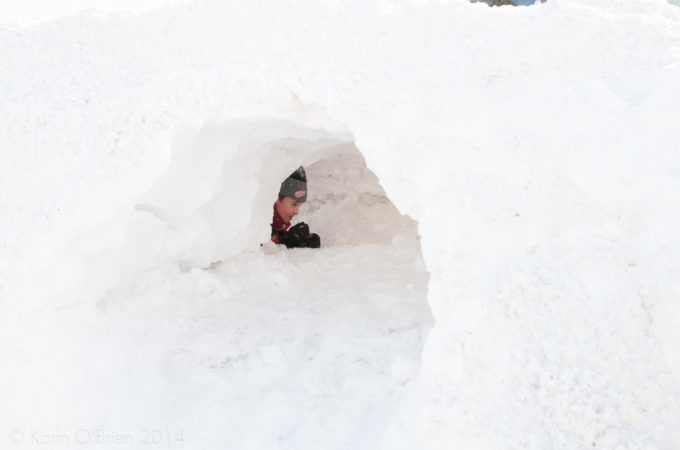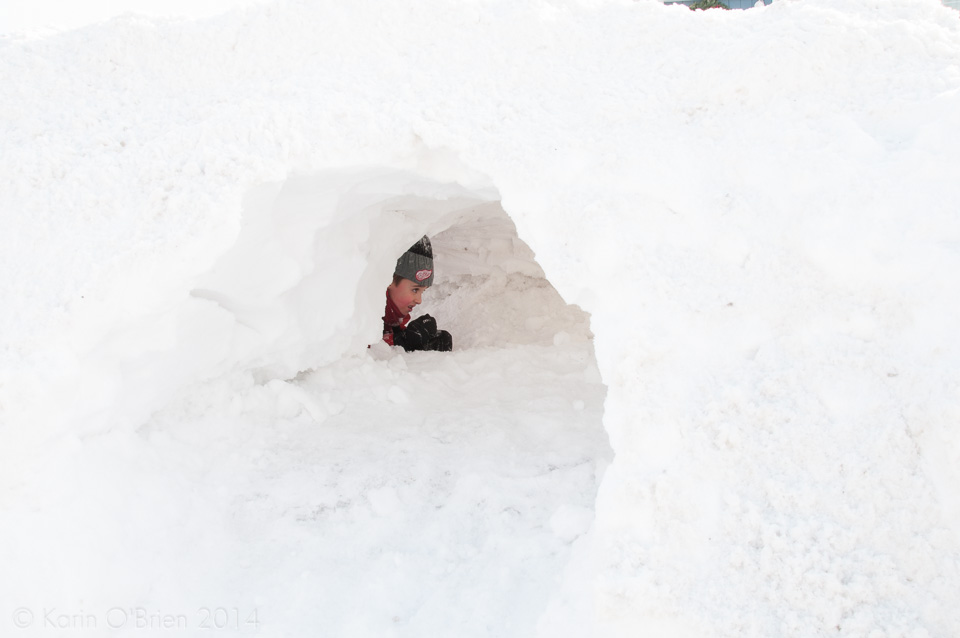A camping tent in the basement.
A snow fort in the backyard.
A bedsheet draped over chairs in the living room.
These three (seemingly) unrelated play activities are actually variations of one and the same and I have yet to meet a child who doesn’t enjoy this kind of play, regardless of age! So why are children of all ages fascinated with building and playing in tents and forts? And what do they gain from this type of play?
For younger children:
- Physically climbing in and out of the tent or fort allows them to practice their motor skills and change body positions (e.g. moving from crawling to kneeling to standing) and over time, this type of play can help them develop mastery and confidence in the strength of their body.
- Adults can support vocabulary development by talking about the tent — what it looks like (e.g. its colour, shape, etc.) and what materials you are using to build it (e.g. chair, sheet, pool noodle etc.). Adults can also model appropriate language as the child moves in and out of the tent or fort. This can help the comprehension of prepositions such as “in”, “out”, “behind”, “in front”, etc.
- When playing with younger children, you may take turns being inside or outside of the tent or fort. These longer and more complex games of peek-a-boo or “Where’s ___?” require children to visually track or find their play partner, support development of attention and are important for understanding the back-and-forth aspect of conversations. This type of play also helps to develop the concept of object permanence, the idea that things still exist when they disappear.
For older children:
- The planning that goes into making a tent or building forts is great for developing expanded attention abilities, developing problem solving skills and even social skills when collaborating with others to build the fort. To set up a tent or fort, older children can help to build it out of conventional or not-so-conventional objects or items that are available to them. This allows them to use their understanding of the properties of objects, e.g. what is strong enough to hold up the tent or how will you keep the tent balanced on both sides.
- Tents and forts can be the perfect foray into imaginary play. A camping tent in the basement can be a “vehicle” for pretending to be in the great outdoors and playing out all the things that can happen there or it could be a fairytale castle. With play, it doesn’t matter whether the child has actually been to a castle, or camping in the woods, it can simply be a way for the child to imagine what it might be like.
- With symbolic play, children are also able to exercise their social skills and expand their communication skills. A child who turns their fort into a veterinary clinic and takes on the role of the vet will have the opportunity to use very different vocabulary than a child who turns their tent into a school and takes on the role of a teacher. The different roles also allow children to take on different social roles, being ‘in charge’ or being a character who follows another’s lead. Symbolic play scenarios that children create can become increasingly fun and complicated. The unfolding of stories during pretend play allow children to work on sequencing of events. Stories that start with “playing house” or “hiding from the bad guy” can have unpredictable endings. This is great for stretching their imagination and taking on different characters and roles, allowing them to understand situations from different perspectives.
- Those engaged in this play will also inevitably have to use their problem solving skills to figure out how to resolve issues embedded in the play as well as practical ones (e.g. anything that might compromise the actual tent or fort, or having to rebuild).
With all of these ideas, who is ready to build a tent or fort in your living room?
—
Eunice & Amanda



